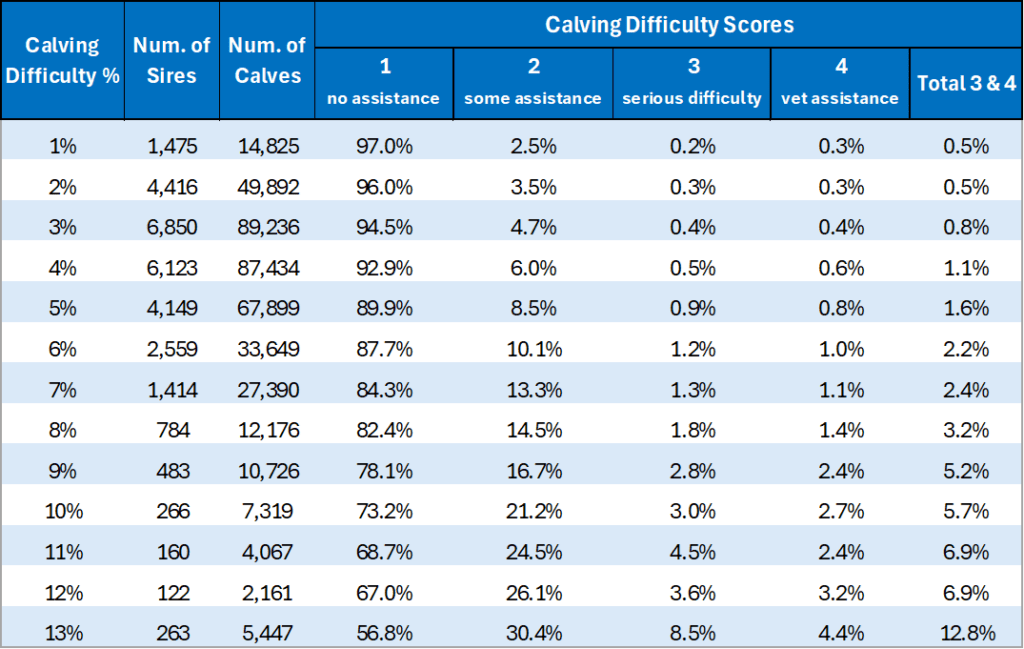Calving difficulty has been an integral part of the beef Euro-Star Index since its inception. The calving difficulty % figure is something that many farmers will assess first when looking at a bull’s index. Difficult calvings are stressful events on a suckler farm. This, along with the associated economic costs due to extra labour, mortality, vet bills etc, is why farmers do not want difficult calvings. As many suckler farmers also have off-farm employment, reducing the potential for difficult calvings is critical to the viability of their farm.
What does the data say?
Analysis of over 400k cow calving difficulty scores submitted by suckler farmers in 2024, shows that the calving difficulty trait is a good predictor of actual calving difficulty on the ground. Table 1 ranks sires based on their ‘Beef Cow Calving Difficulty %’ and looks at the prevalence of each of the four calving difficulty scores recorded. As the trait % increases, so too does the prevalence of recorded difficulty across the scores (2-4).

Why is the total % of 3’s and 4’s less than the actual calving difficulty %?
Take the sires with a calving difficulty of 5%. There were 4,149 of these sires with 67,899 progeny with recorded calving scores. While only 1.6% of them were recorded as 3 or 4 (serious difficulty or vet assistance), there was also a further 8.5% that required some assistance. The calvings where a score of 2 was recorded were events where, if no intervention came, the calf may not have survived. The overall calving difficulty % takes into account all instances of assistance.
How should I record the calving scores in my herd?
While assigning a calving difficulty score can be somewhat subjective depending on the farmer and the calving event, there are still objective guidelines that farmers can use when recording scores. Table 2 gives a guide on how to assign calving difficulty scores.
A difficult calving may be the result of something other than a big calf, such as malpresentation. If this is the case, a malpresentation can be recorded on www.icbf.com. A farmer can login to their ICBF account and under the ‘Record Events’ dropdown, click into ‘Birth Events’. Other calving data such as birth weight, calf size and calf vigour can also be recorded here. This data can also be recorded through the ICBF app. Recording accurate calving data is important in order to ensure the accuracy of the ICBF calving evaluations.
Key Points:
- The calving difficulty trait is a good predictor of actual calving difficulty on the ground.
- Difficult calvings result in extra labour and cost for farmers.
- Farmer recorded calving difficulty scores are a critical part of the ICBF calving evaluations.
- Calving difficulty figures can be accessed for all animals on the ICBF Animal Search at www.icbf.com.

